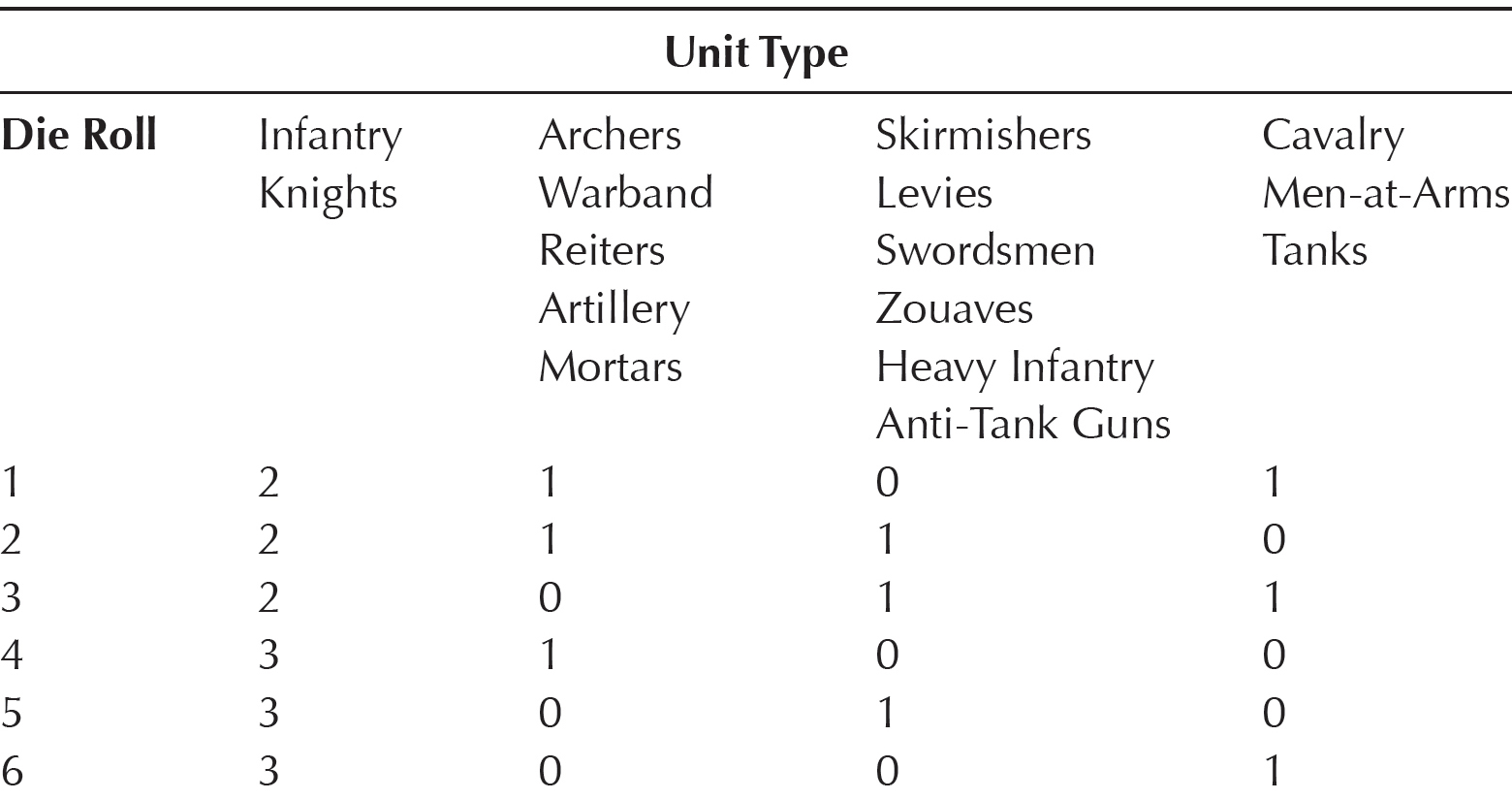Chapter 20
Wargame Scenarios
There is a paradox at the heart of wargaming, in that many players are absolutely and rightly fascinated by finding the right set of rules, but pay far less attention to the type of battle (or scenario) which they play. All too many wargamers will acquire many different rulebooks, examine all facets of their contents, and have very definite opinions upon their veracity – and confine their scenario to the traditional pitched battle. This involves a rather contrived encounter featuring armies intended to be absolutely balanced fighting over a wargames battlefield whose terrain favours neither side. This sort of encounter may be ideal for a wargaming competition, but soon becomes rather sterile. More importantly, the pitched battle scenario is intrinsically implausible, given that the whole point of historical generalship was to force the enemy to fight at a disadvantage, rather than to risk one’s all on an equal engagement.
The key to any rewarding wargame is therefore an imaginative scenario. I have accordingly included thirty different games in this chapter, which can be fought using any of the rulesets included in this book. All are designed to be fought on small tables of 3’ x 3’, allowing for accessible encounters in all households; each can be played in one hour. Maps are provided with each scenario in order to facilitate their re-creation on the tabletop: each square on the map represents an area of 12” x 12”.
Each scenario has the same format. Most of the commentary provides essential information (such as troop deployment, reinforcement schedules, special rules and victory conditions). Each encounter also includes a description of the situational context, allowing a wider backdrop to the game: this allows players to see that the scenario has a wider strategic purpose, adding character to each encounter.
The sizes of each army are the same in nineteen of the thirty scenarios, but variety is always provided by varying the composition of each. Generals invariably had to operate with the troops they were allocated, rather than those with which they would necessarily prefer to act. This doubtless regrettable if historically accurate fact is accounted for by the following mechanism: players must roll a die and consult the relevant table below to ascertain the composition of his or her army (if identical armies are generated, players should re-roll their dice until distinct forces are created):
Table 1: Armies With 6 Units

Table 2: Armies With 4 Units

Table 3: Armies With 3 Units

The final part of each scenario describes its inspiration. This is a vital part of any game, for all writers should always acknowledge their sources. My scenarios are usually derived either from great historical battles, or games devised by eminent wargames writers. I have invariably changed and abbreviated the original scenarios to allow the re-creation of the essential situation on the wargame table. I have included a list of further reading, for any player who wishes to find out more about my sources.
SCENARIO 1: PITCHED BATTLE (1)
SITUATION
Two armies are facing up to each other over a symmetrical battlefield.
ARMY SIZES
Both armies have 6 units.
DEPLOYMENT
1. The Red army deploys first, within 6” of the northern table edge.
2. The Blue army deploys second, within 6” of the southern table edge.
REINFORCEMENTS
There are no reinforcements in this scenario.
SPECIAL RULES
No special rules apply to this scenario.
GAME LENGTH AND TURN ORDER
This scenario lasts 15 game turns. The Red player goes first in each turn.
VICTORY CONDITIONS
The army which eliminates the greatest number of enemy units is the victor.
INSPIRATION
The situation for this scenario was provided by the Battle of Ceresole (1544), when the French army defeated the forces of the Holy Roman Empire. It has to be said that totally symmetrical battlefields like this are most uncommon in periods after Ancient times (when battles frequently occurred on flat plains). They are however rather more prevalent in wargames tournaments: most competitive encounters are predicated on the notion of contrived equality both in terms of army composition and topographical layout. Such encounters can be very enjoyable, but could be said to lack variety.
FURTHER READING
The following books provide fine accounts of the Battle of Ceresole:
Featherstone, Donald, Wargaming: Pike-and-Shot (David and Charles, 1977) (pp. 39–46).
Oman, Sir Charles, A History of the Art of War in the Sixteenth Century (Greenhill Books, 1987; originally 1937) (pp 229–243).